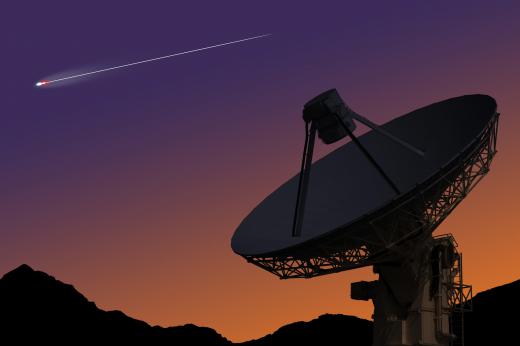What is the Large Magellanic Cloud?
 Michael Anissimov
Michael Anissimov
The Large Magellanic Cloud is a nearby galaxy of the Milky Way, our own galaxy. It is only 160,000 light years distant, much less than the more famous Andromeda Galaxy, which is two million light years distant. The Large Magellanic Cloud gets less attention because it is less photogenic, less luminous, and significantly smaller than both the Milky Way and Andromeda galaxies.
The Large Magellanic Cloud has a mass of about ten billion Suns, making it only about 1/10th as massive as the Milky Way. The Large Magellanic Cloud is called a "cloud" because of its appearance resembling a cloud — it is not fundamentally different in composition than any other galaxy. Surveys of the Large Magellanic Cloud have found 400 planetary nebulae, 60 globular clusters, and 700 open clusters, with hundreds of thousands of giant and supergiant stars. The most recent supernova, Supernova 1987a, occurred in the Large Magellanic Cloud. Observations of stellar phenomena within the cloud have been used for generations to familiarize astronomers with different classes of celestial objects.

The Large Magellanic Cloud is classified as an irregular galaxy, although it has a prominent bar in its center that indicates it may have been a barred spiral in the past. The Large Magellanic Cloud is the second-closest galaxy to the Milky Way -- only the Sagittarius Dwarf Spheroidal is closer, at a distance of merely 51,000 light years. This is very close, as the Milky Way galaxy itself only has a diameter of 100,000 light years.
Like with other galaxies, the distance to the Large Magellanic Cloud is measured using what astronomers call "standard candles," the most popular being Cepheid variable stars. Cepheid variables flare up and cool down over largely fixed periodic intervals. Because the period of their variability is strongly correlated to their absolute magnitude, the absolute magnitude of distant Cepheid variables can be known by observing their period. Once the star's absolute and observed magnitudes are known, its distance can be computed.
AS FEATURED ON:
AS FEATURED ON:











Discuss this Article
Post your comments